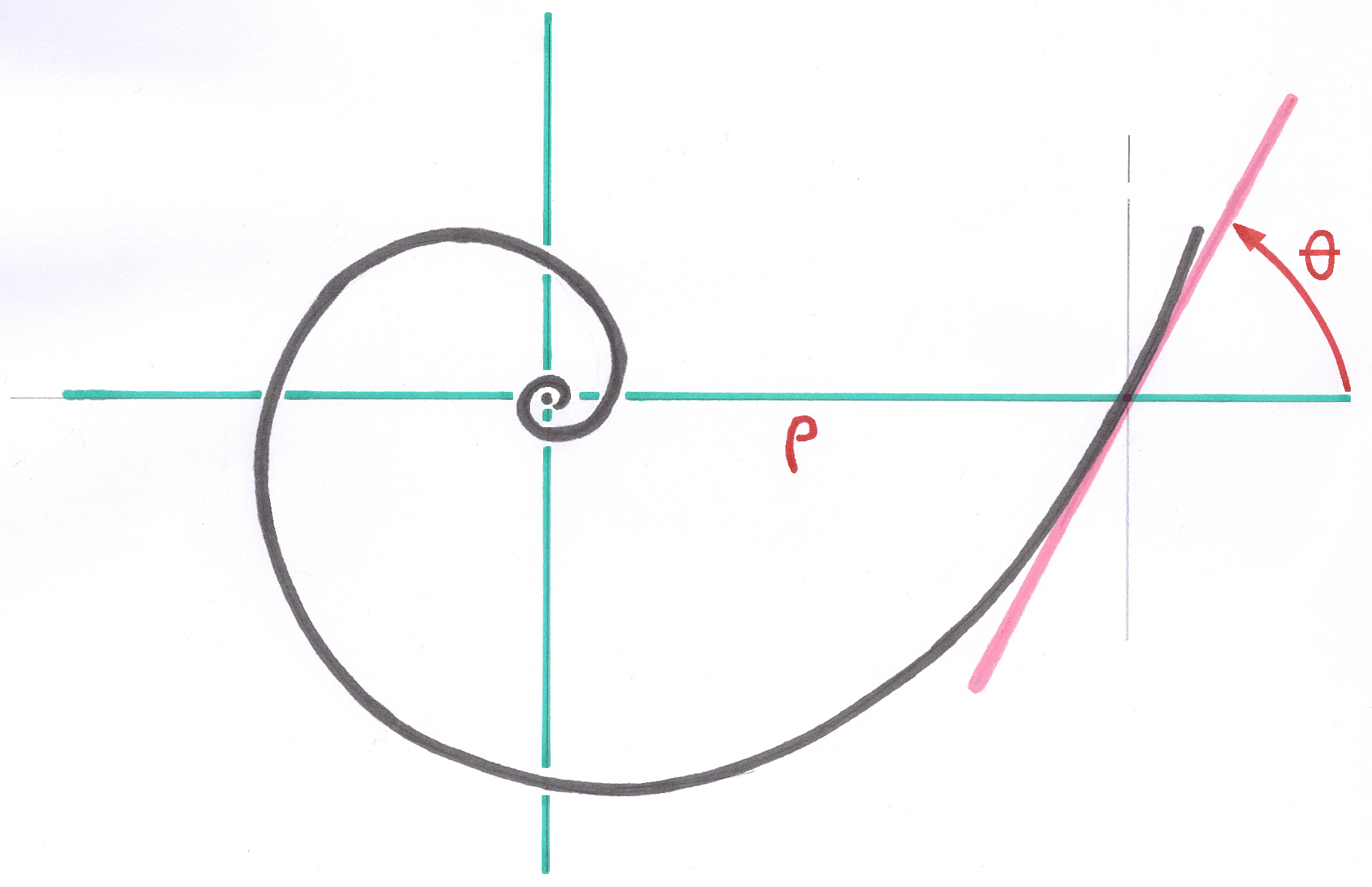4.7. The Ascending Interlocking
4.7.1. Summary
The Ascending Interlocking is a remarkable property advantageously applicable to the stems of prosthesis which are based on the principle of the Conical Junction in the bone. The so-called anatomic prostheses and custom are excluded.
With the principle of Ascending Interlocking for a series of sizes, two implants of consecutive size or more, must present, vis-a-vis the bone, in their fixation zone, on part of sufficient axial length, portions of anchoring identical in all respects, so that the geometrical anchoring of each of the two sizes takes place, in the same osseous bed, but higher, without new preparation.
Ascending Interlocking makes it possible to know and plan the variation of the height of the femurhead when one sets up a stem of bigger size in an osseous bed already prepared.
Only the stems fixed in the bone by Conical Junction offer this possibility and in particular the stems in conformity with the principles of Geometric Anchoring.
This operational information is inaccessible with prostheses not having this property, the increase of a size to the next is unforeseeable and being ignored even by their designers.
4.7.2. Previously, uncontrolled ascent from one size to another
Before the arrival of the AlloClassic stem, one was satisfied to draw the implants in several sizes, while increasing by two millimetres -here, four millimetres -there certain dimensions to pass from a size to the following one. That allowed, extremely fortunately, with the following size to a little better fill a larger osseous bed. The variation of position in height pulled by the increase in size was by no means taken into account. For the cemented stems, the use of surgical cement arranged that in an acceptable way.
Irregular jumps between the sizes of the same series did not allow any comprehension nor planning the height which would be reached by the prosthesis and thus over the Total Osseous Length. Moreover, to date, there does not exist any template making it possible to plan the rise of the stems according to the successive sizes, and thus to envisage the position of the heads.
The stems known as “autoblocking” ( Müller ), whose only contour of face presented a constant angulation of a size to the following one, the former and posterior faces remaining almost parallel and constant thickness, without constant angulation, preceded already Ascending interlocking.
4.7.3. Ascending Interlocking
Ascending Interlocking is closely related to the principle of fixation of the implant in the bone by conical junction.
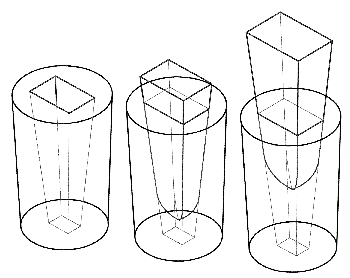


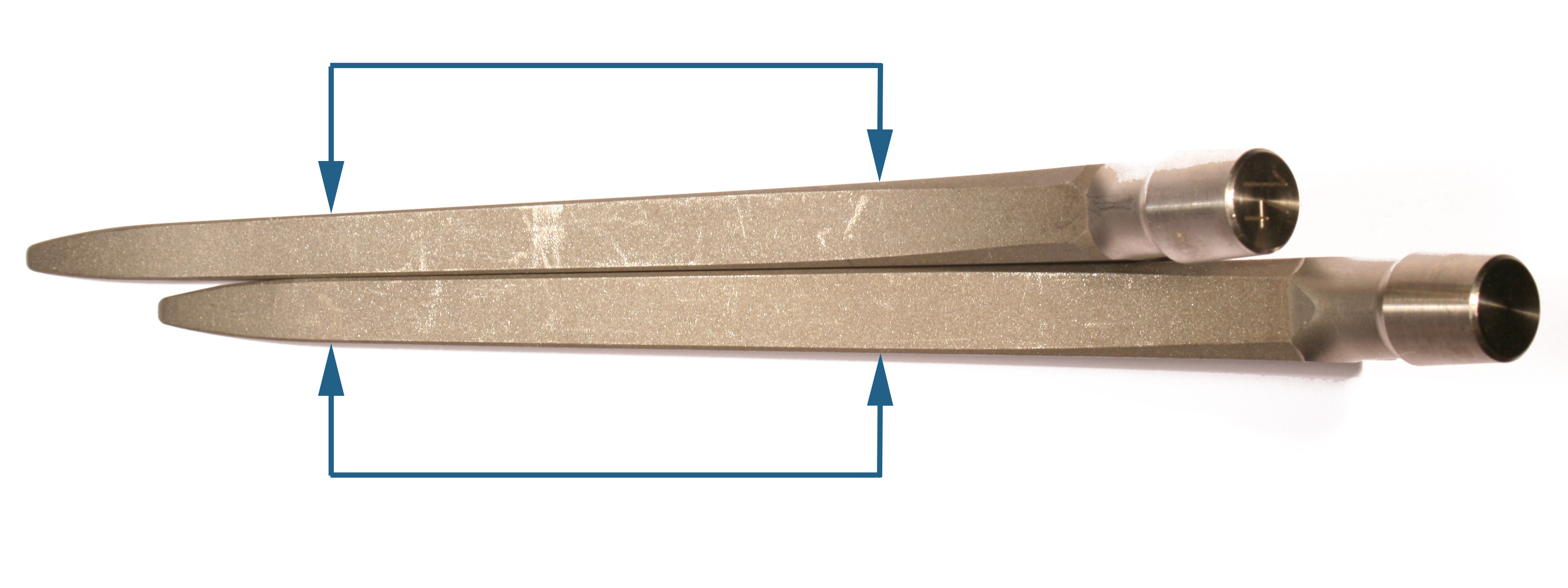
It is this zone common to two sizes which makes it possible to substitute for a stem in place, the stem of the following size without new preparation of the bone. This way, Ascending Interlocking is carried out and makes it possible to obtain an increase of total osseous length.
To obtain intermediate heights, and consequently intermediate total osseous lengths, a complement of rasping, controlled by tests, is always possible.
It is of course that applies only to one or two sizes above or below of the considered size.
I point out that in the Zweymüller stems of the first generation the principle of Ascending Fitment neither known nor was applied.
4.7.4. Independence of the choice of the spread
The principle of Ascending Interlocking is independent from the option chosen to spread out the sizes of the implants of the same series. Naturally, I applied this principle to the series of the Optimized Sizes.
But it is perfectly possible to apply this principle to spread out sizes in a linear way, i.e. for example with stems whose width increases regularly by 2 mm of a size to the following one. This principle is also applicable to series whose dimensions vary in an irregular way.
4.7.5. Limits of application
The principle of Ascending Interlocking is absolutely not realizable with the prostheses known as "anatomical".
It is not either applicable to the stems whose important segment of the distal part is cylindrical and whose preparation is carried out by a borer with flexible axis whose head has a diameter slightly higher than the cylindrical part of the stem.
This preparation by borer with flexible axis of lower diameter than the diameter of the head of the borer, makes it possible to obtain a tunnel of constant diameter but whose axis is an uncontrolled curved line and not controlled by the operator. One can establish in this tunnel only rectilinear cylindrical stem of lower diameter and which will be in contact with the tunnel only in some randomly distributed points.
These prostheses, of which the cylindrical distal part does not take part of anything in the axial weight support of the patient, have as a consequence a voluntarily insufficient distal anchoring, and the totality of the vertical load is deferred on the bulky metaphysary part.
The goal of these polished cylindrical stems is to guarantee that the distal osteointegration of the stem will not take place, being accepted in advance that in the long run these stems will have to be reoperated and extracted. Moreover, these stems do not satisfy at all my Principle of Distributed Constraints.
Ascending Interlocking is also not applicable to the stems of cylindrical form or presenting a angulation in direction of the point, but of which the distal part comprises a slit intended to enable him to yield elastically to a tightening of the medullary canal and thus to avoid a conflict due to a geometry of the insufficiently controlled preparation of the channel.
These methods of anchoring are in opposition with the Principle of the Distributed Constraints which is one of the basic elements of Geometrical Anchoring.
4.7.6. Application extensions
The Ascending Interlocking can be applied to stems with a rectangular section, such as AlloClassic and SL Plus, but also to stems with a non-rectangular section such as the Anatomica.Nova hexagonal section stems and the Modular Plus reoperation stems which have 8 longitudinal edges arranged on a circle and whose preparation is obtained by a flexible conical reamer.
For the Modular Plus deep reoperation stems, I mathematically defined their longitudinal axis in a curved space following a logarithmic spiral segment (see my patent 9.8.5.)
In this curved space, all the rules of Ascending Interlocking are applied as well as the Principle of Distributed Constraints and Optimized Sizes calculated with Growth Factors. These curved stems fully satisfy the theory of Geometric Anchoring.
4.7.7. Examples of application
The representation in Ascending Interlocking simulated by calculation shows the 12 sizes of stems Modular Plus front view in the position than they would take if one inserted them in a single prepared theoretical channel.
Thanks to the two proximal parts of different heights and the heads with different neck lengths, all the Total Osseous lengths can be practically obtained with small height intervals. Any intermediate position can always be obtained by a slight final retouching with the spiral reamer.
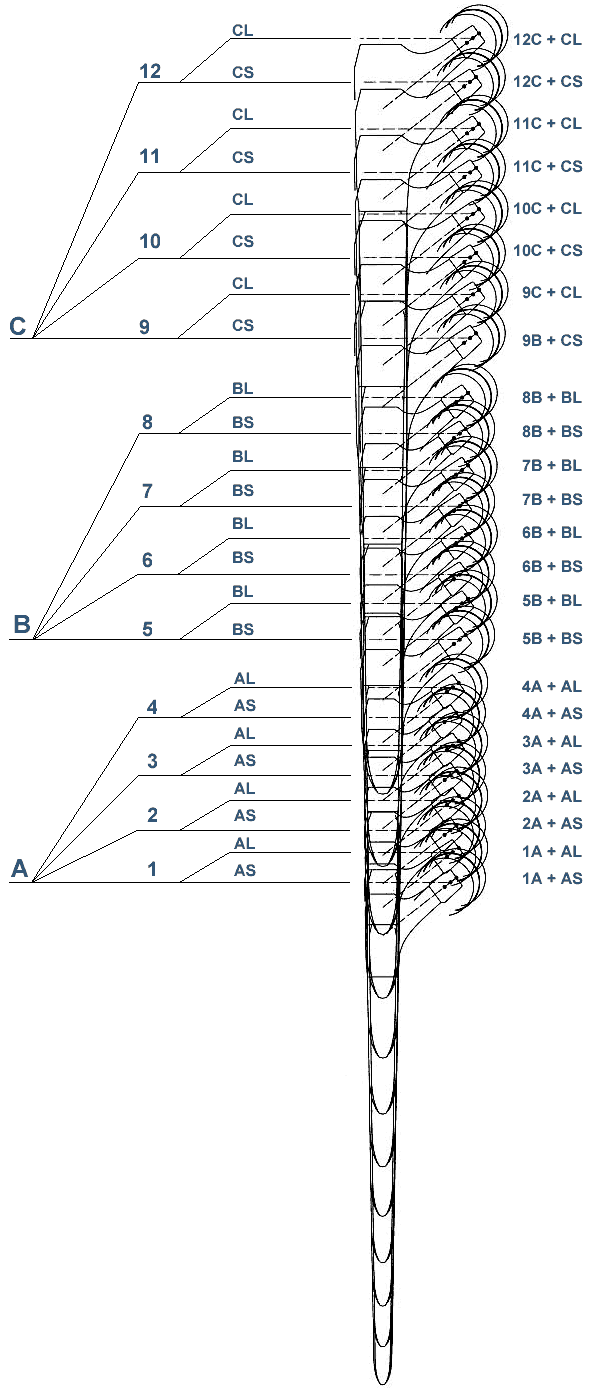
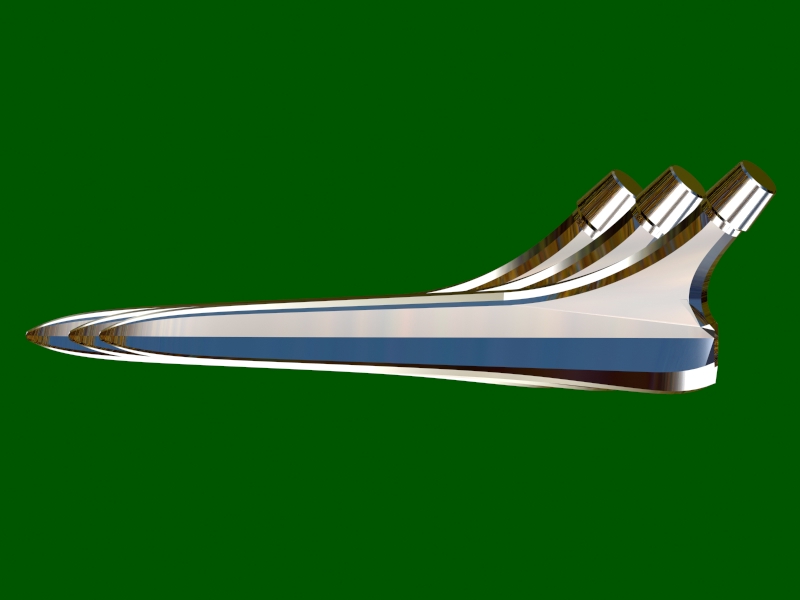
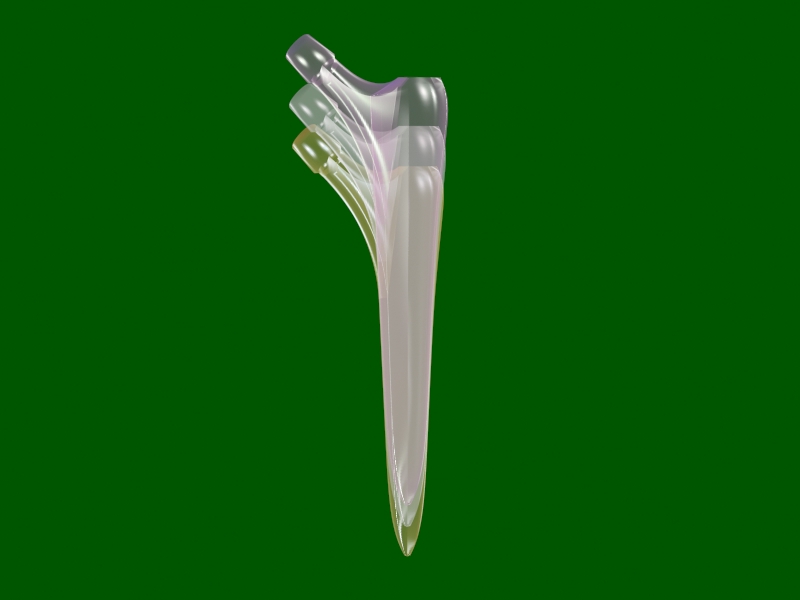

4.7.8. Some modules have become useless
Thanks to the Ascending Interlocking which makes it possible to implant the following stem size to obtain a controlled lengthening of osseous length, longer proximal parts and heads with extra long necks, being able to cause stem fractures, are not necessary any more.
----
